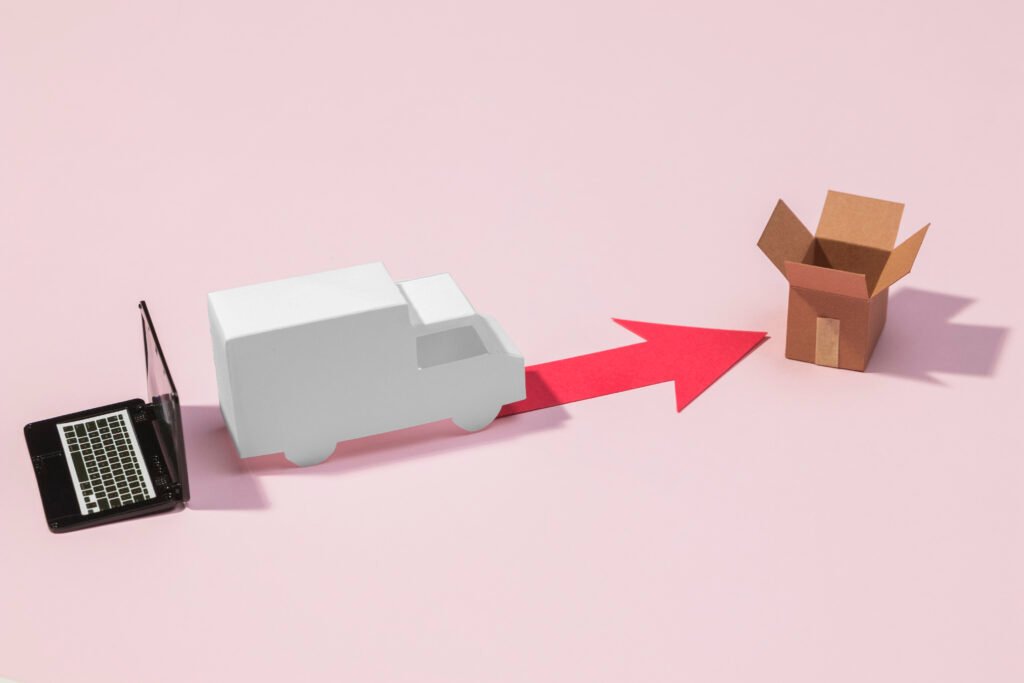Introduction
Welcome to the exciting world of dropshipping! Whether you’re a budding entrepreneur or an experienced business owner looking to expand, dropshipping offers a low-risk way to start an online store. In this comprehensive guide, we’ll cover everything you need to know about kickstarting your dropshipping venture in 2024.
Table of Contents
1. What Is Dropshipping?: Dropshipping Business

Dropshipping is an e-commerce business strategy that enables entrepreneurs to launch online ventures and sell goods to customers without ever having to store the products themselves. Imagine you’re starting a boutique clothing store, but instead of stocking inventory in your garage or renting a warehouse, you partner with suppliers who handle everything from inventory management to shipping. Here’s how it works:
- The Customer Places an Order:
- Imagine a cozy coffee shop. Your online store is like that inviting café where customers browse through your virtual shelves. They spot a beautiful handcrafted mug—the one that speaks to their soul. It’s not just a mug; it’s a vessel for their morning rituals, a companion during late-night work sessions, and a cozy hug in ceramic form.
- The customer clicks the “Buy Now” button, their heart fluttering with anticipation. They’ve made a choice—a connection with that mug. It’s like meeting an old friend after years apart.
- You Forward the Order to Your Supplier:
- Picture yourself as the conductor of an orchestra. You take the customer’s order—the sweet symphony of their desire—and pass it along. You’re the bridge between dreams and reality.
- You send the order details to your supplier—the middleman who knows the secret paths to hidden warehouses. They receive your message like a whispered promise. “This mug,” you say, “it’s meant for someone special.”
- Supplier Ships Directly to the Customer:
- The supplier, in their bustling warehouse, cradles the mug. They wrap it carefully, like swaddling a newborn. Each layer of bubble wrap is a hug, a silent wish for safe travels.
- The mug embarks on its journey—a magic carpet ride through postal routes and courier vans. It crosses cities, rivers, and mountains. Along the way, it meets other parcels—a book, a scarf, a tiny succulent. They exchange stories, secrets, and hopes.
- Finally, the courier arrives at the customer’s doorstep. The mug, still warm from its travels, is unveiled. The customer’s eyes widen—their heart skips a beat. It’s here! The mug they chose, the one that whispered, “You’re home now.”
- They cradle it, feel its weight, and sip their first coffee. It’s more than a mug; it’s a memory waiting to happen. And you—the conductor, the whisperer, the bridge—you’ve made it all possible.
2. Pros of Dropshipping

- Only Pay When You Sell:
- Imagine you’re hosting a grand party. You’ve set up a beautiful banquet hall, adorned with twinkling lights and fragrant flowers. But here’s the magic: you only pay for each guest who walks through the door. No upfront costs, no empty seats. Dropshipping works similarly.
- When a customer places an order in your online store, you pay your supplier—the invisible chef behind the scenes. It’s like serving a gourmet meal without buying groceries in advance.
- Test Out New Products at the Drop of a Hat:
- Picture yourself in a cozy bookstore. You’ve just received a shipment of mystery novels. But wait! What if romance novels are the real crowd-pleasers? With dropshipping, you can switch genres effortlessly.
- Introduce new products, experiment with trends, and pivot like a graceful dancer. It’s like rearranging bookshelves to keep readers intrigued.
- No Inventory Management:
- Imagine a clutter-free room. No stacks of boxes, no inventory spreadsheets. That’s the beauty of dropshipping—you don’t hold physical stock.
- Your supplier handles the warehouse ballet: pirouettes of packing, leaps of shipping. Meanwhile, you sip your virtual coffee and focus on customer delight.
- No Need for a Storefront:
- Close your eyes and envision a charming boutique. Lace curtains, polished wooden floors, and a tinkling bell above the door. But guess what? It’s all digital.
- Your online store is the cozy boutique where customers browse, select, and fall in love with products. No rent, no dusting shelves. It’s like owning a shop in the clouds.
- Flexible Work Schedule:
- Imagine waking up to sunlight streaming through your window. You check your phone—a new order! You slip into your virtual shopkeeper role, process the order, and sip your morning tea.
- Dropshipping lets you dance to your own rhythm. Work from anywhere, anytime. It’s like having a 24/7 pop-up store that fits in your pocket.
- Grow Your Business as Fast as You Want:
- Picture a garden. You plant a seed, water it, and watch it sprout. With dropshipping, your business growth isn’t limited by physical space.
- Scale up like a sunflower reaching for the sky. Add more products, serve more customers. It’s like turning a tiny seed into a lush forest.
3. Cons of Dropshipping
dropshipping can be a great way to start an online business with minimal upfront costs, but it’s not all sunshine and rainbows.
1. Lower Profits
Since you’re not buying products in bulk and marking them up yourself, your profit margins tend to be lower compared to traditional retail models. Imagine selling a cool phone case – the supplier might set the price at $10, and you might only be able to realistically add a $5 markup to stay competitive. That leaves you with $5 profit per sale, which can be tight after factoring in advertising costs and other expenses.
2. Limited Brand Control
You’re essentially selling someone else’s products under your brand name. This makes it challenging to build a strong brand identity and differentiate yourself from competitors. It’s like trying to build a reputation for delicious pizza when you’re just ordering from a local pizzeria and slapping your logo on the box.
3. Inventory Management Issues
You rely on your suppliers to have products in stock and ship them out promptly. If they run out of stock or experience delays, it can reflect poorly on your business. Imagine a customer eagerly awaiting that perfect pair of sunglasses you advertised, only to find out they’re on backorder. Not a good look!
4. Higher Dependence on Suppliers
Your success hinges on the reliability and efficiency of your suppliers. If they have poor customer service, slow shipping times, or a history of quality issues, it can damage your reputation and hurt your sales. It’s like hitching your wagon to a random horse – you have no control over where it goes or how fast it gets you there.
5. Increased Competition and Market Saturation
Dropshipping is a popular business model, which means there’s a lot of competition out there. You’ll need to find a way to stand out from the crowd, whether it’s through unique product selection, exceptional customer service, or targeted marketing.
4. Benefits of Dropshipping

Starting an online business using dropshipping can be both exciting and rewarding. Here are the advantages that make dropshipping an attractive option for entrepreneurs:
- Reduced Risk and Low Startup Costs:
- Imagine opening a physical store with shelves full of inventory. That’s a significant financial commitment. But with dropshipping, you don’t need to invest in any inventory upfront. You only purchase products when a customer places an order. This reduces the risk and lowers your initial costs.
- It’s like setting up a cozy little shop without the burden of stocking shelves!
- No Need to Hold Inventory:
- In a traditional retail model, you’d have to manage inventory, storage space, and logistics. But in dropshipping, your supplier handles all of that.
- You focus on building your brand, marketing, and customer experience while your supplier takes care of the rest.
- Low Entry Barrier:
- Starting a dropshipping business doesn’t require a massive capital investment. You can launch your online store without breaking the bank.
- It’s like opening a charming boutique without needing a fortune.
- Scalability:
- As your business grows, so can your product offerings. You’re not limited by physical space or inventory constraints.
- It’s like expanding your cozy boutique into a bustling department store.
- Easily Replace and Test Products:
- With dropshipping, you can quickly add or remove products from your store. If something isn’t selling well, swap it out for a new item.
- It’s like rearranging the shelves in your boutique to showcase the latest trends.
5. How to Start Your Dropshipping Business
Starting a dropshipping business can be an exciting venture, and with the right approach, you can turn it into a successful online venture.
- Commit to Starting a Dropshipping Business:
- Understand that dropshipping requires commitment and a long-term perspective. It’s not a get-rich-quick scheme. Whether you invest time or money, be realistic about the effort required1.
- Imagine yourself as an entrepreneur embarking on a journey. Picture the challenges and rewards ahead.
- Choose a Dropshipping Business Idea:
- Research different niches and trends. Consider what interests you and what products resonate with potential customers.
- Think about your passions and hobbies. Maybe you’re passionate about eco-friendly products, fitness gear, or unique home decor.
- Remember that validated product ideas are essential. Shopify provides a list of trending products based on top-selling categories1. Use this as inspiration.
- Do Competitive Research:
- Investigate competitors within your chosen niche. Understand their pricing, product offerings, and marketing strategies.
- Imagine yourself as a detective, gathering clues about what works and what doesn’t. Learn from others’ successes and mistakes.
- Choose a Dropshipping Supplier:
- Partner with reliable suppliers. Look for those who provide quality products, timely shipping, and good customer service.
- Imagine yourself building relationships with suppliers. Trust and communication are key.
- Build Your Ecommerce Store:
- Set up your online store using platforms like Shopify. Customize it to reflect your brand identity.
- Imagine yourself as an architect designing a beautiful storefront. Consider layout, colors, and user experience.
- Decide on a Business Structure:
- Choose a legal structure (e.g., sole proprietorship, LLC) and register your business.
- Imagine yourself filling out paperwork, making your business official. You’re now part of the entrepreneurial world.
- Get Your Finances in Order:
- Set up a business bank account, track expenses, and manage cash flow.
- Imagine yourself as a financial planner, ensuring everything runs smoothly.
- Market Your Dropshipping Store:
- Develop a marketing strategy. Use social media, content marketing, and paid advertising.
- Imagine yourself as a storyteller, sharing your brand’s narrative. Connect with potential customers emotionally.
- Analyze and Improve Your Offering:
- Continuously monitor your business metrics. Adjust your strategies based on data.
- Imagine yourself as a scientist conducting experiments. Test different approaches and learn from the results.
6. Conclusion : Dropshipping Business
Don’t get me wrong, starting a dropshipping business can be an incredible adventure! It’s like opening your own online store without the hefty upfront investment or the headache of managing a warehouse full of inventory. It’s freedom to be your own boss, to curate a collection of products you’re passionate about, and to build something from the ground up.
But like any adventure, there can be a few bumps along the road. It’s not always sunshine and profits. Those fancy phone cases you’re selling? The profit might be smaller than you imagine, especially after you factor in advertising and other costs. It’s like running a lemonade stand on a crowded street – there’s a lot of competition, and you need to make your stand super appealing to get people to stop and buy.
Here’s the thing: you won’t have complete control over everything. You’re building a brand, but you’re also relying on suppliers to have the products you’re selling and to get them to your customers quickly. It’s like trusting a friend to deliver your birthday cake – if they’re late or the cake is a mess, it reflects poorly on you, even though you didn’t bake it yourself.
The good news? These challenges can be overcome! By finding reliable suppliers who share your commitment to quality and fast shipping, you can build trust with your customers. By focusing on excellent customer service – think prompt responses to questions, helpful troubleshooting, and maybe even a handwritten thank you note – you can create a loyal following who keeps coming back for more.

